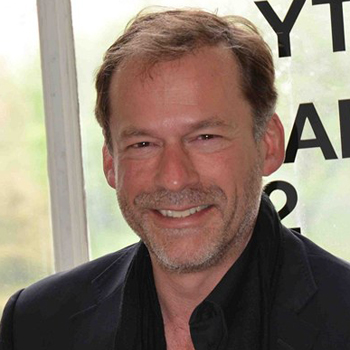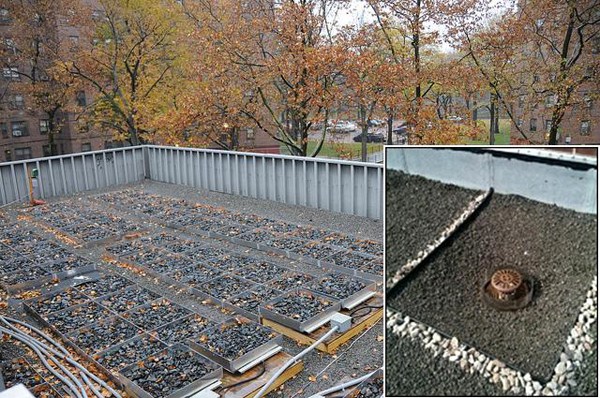News
Alexandros Washburn, Urban Design Chief, New York CIty, on PlaNYC
 Alexandros Washburn, Affiliate ASLA / Praha
Alexandros Washburn, Affiliate ASLA / Praha
New York City has created a new emphasis on urban design excellence. How is the city defining this? What can New York City do to bring more innovative landscape architecture to the city, like the new Highline project in Chelsea?
Well, the city is working hard to bring innovative landscape architecture to New York, to all the boroughs in a multiplicity of scales and projects. It’s a very exciting time for landscape architecture in the city because Mayor Bloomberg has put out PlaNYC, which is a set of programs, 127 of them actually, to adapt the city, at a time of rapid population growth, to climate change. And what this does is it puts a premium on techniques of landscape, and an understanding of nature in forming our city for the 21st century.
Mayor Bloomberg has pledged to plant a million new trees in the five boroughs in the next decade. How does this goal influence park development?
Well, the million trees initiative is one of the 127 programs, and I must say that we’ve got a little bit of catching up to do first of all in filling all those tree beds that are currently empty. So, the million new trees is going to go a long way towards greening our streets and also a bit towards the parks, but it’s just one piece of a much larger program to ensure that every New Yorker has access to a park within five minutes of wherever they are.
New York City aims to become one of the world’s most sustainable cities. This has been highlighted by Mayor Bloomberg. Are there trade offs between the city’s sustainability goals and urban design excellence?
Absolutely not. Sustainability goals and urban design excellence, I think, are perfectly aligned. Urban design excellence begins with the pedestrian. New York is a city of walkers. It’s a city where the streets are the most exciting places in the world. It’s funny that we use the word pedestrian, you know. In Webster’s dictionary, it connotes something dull, right, some thing everyday. Well, New York pedestrian means absolutely fabulous, and I think to see it from the point of view of the pedestrian first naturally aligns you with those processes of sustainability, which will define the successful cities of the 21st century.
I heard Casio Taniguchi, former mayor of Curitiba in Brazil, speaking at the National Building Museum a few weeks ago. He described his city in biological terms as if it were a living organism that required care in order to grow. Do you think see similarities between biological change and urban growth?
Well, certainly – I mean a city is a living entity itself. It’s the most complex living entity on earth, so I think I would take the point of view of saying a lot of what we do in urban design and infrastructure and the streetscape – what we try to do, is put down a trellis for growth. We could use a natural analogy in the sense that we have to provide the right substrate, the right structure to allow something as glorious and living as a city to grow around us, and grow healthily and well.
Green roofs, if created in greater number, can decrease the temperature of the city by a degree. Just a single degree decrease in temperature can lead to hundreds of millions in building cooling savings. Is New York City doing these types of calculations? Is this a target?
We are developing a set of metrics right now as part of the mayoral initiative to green the codes. Green codes, one of the specific measures, offers support for green roofs, although here I’ll bring up the context of blue roofs.
New York has a heat island affect that we have to talk about where green roofs are particularly helpful. However, it also has a serious storm water issue because we have combined sewer outflows in the sanitary and storm water. It is very difficult for the city to work through intense rainstorms and we need forms of detention for water. And one of those temporary detention measures would be through a blue roof.
Now, an intensive green roof in a way acts like a blue roof because it absorbs and retains and detains a certain amount of water. However, when you’re talking about the weight loads of an intensive roof, then you’re talking about structural loads that many buildings, particularly existing row houses or others, aren’t structured to take. Then, you have to go to intensive green roof system or, conversely, what we’re looking at very closely, is the blue roof, something which will hold a couple inches of water, hold it just long enough for the storm to pass, and then release it gradually back into the sewer systems.
 Blue roof demonstration project, NYC / NYC Department of Environmental Protection
Blue roof demonstration project, NYC / NYC Department of Environmental Protection
So, the point being that in New York we are recognizing the value of our roofs. How we get them to fit into the ecological agenda that we have is a matter that we’re working on right now.
Lastly, what practical advice do you have for landscape architects working in the five boroughs?
Well, when you work in the five boroughs, you have to understand the ethos or the history of New York City planning ever since the top-down master plan of the 1960’s failed. And that’s that New York has a community based planning system. So, when you work in New York, you have to work with the community. Of course, you have your official client, private or public, but it’s totally important to immerse yourself in the place, and New York is a city of neighborhoods. Every one is very diverse from every other. And even within each borough, it’s a mosaic of different neighborhoods.
So, I guess if I had one piece of advice, it’s get to know the community. Get to know the place – it’s topography, hydrology, history, culture, arts, people, food – everything. Every neighborhood in New York is like a little world, and it’s a fascinating process to get to know each and every one.
Alexandros Washburn, Affiliate ASLA, is former urban design chief for New York City. He is author of The Nature of Urban Design: A New York Perspective on Resilience.
Interview conducted by Jared Green